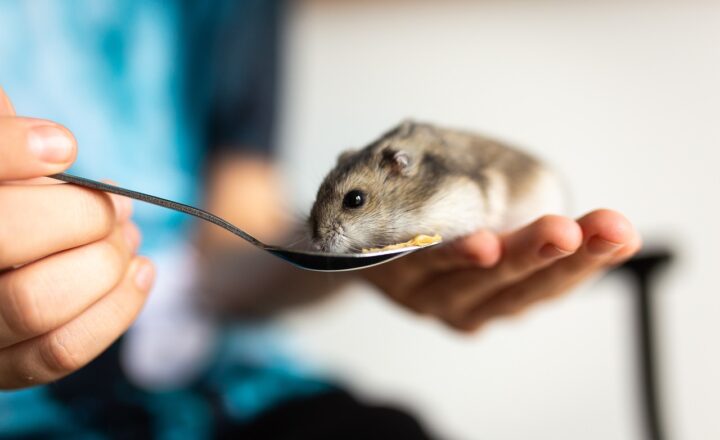The Most Common Health Problems in Hamsters and How to Prevent Them
November 13, 2024

Hamsters are among the most popular pets, beloved for their playful nature and small size. However, just like any other animal, they are prone to certain health problems that can affect their wellbeing. As a responsible hamster owner, it’s crucial to be aware of these common health issues and how you can prevent them. In this comprehensive guide, we will explore the most prevalent health problems in hamsters, their symptoms, causes, and effective prevention strategies.
1. Wet Tail: A Serious Digestive Condition
Wet tail is one of the most severe health issues hamsters can face, especially in young hamsters under six months old. This condition can be life-threatening if not treated promptly.
Symptoms:
- Diarrhea or watery stool
- Lethargy or lack of energy
- Loss of appetite
- Wetness around the hindquarters
Wet tail is typically caused by stress, poor diet, or sudden changes in the hamster’s environment. High-stress situations, such as overcrowding, rough handling, or transportation can trigger this condition.
Prevention:
To prevent wet tail, maintain a stable and stress-free environment for your hamster. This includes:
- Avoiding overpopulation, as hamsters are territorial animals
- Providing a balanced diet with high-quality pellets and fresh vegetables
- Minimizing handling stress, especially in young hamsters
- Ensuring clean living conditions to reduce bacterial infections
If you notice any symptoms of wet tail, consult a veterinarian immediately.
2. Respiratory Infections: A Common Problem
Hamsters are susceptible to respiratory infections, which can arise from poor housing conditions or exposure to drafts.
Symptoms:
- Coughing or sneezing
- Labored breathing or wheezing
- Nasal discharge
- Lethargy or decreased activity level
These infections are frequently caused by exposure to damp bedding, dust from bedding material, or a sudden change in temperature.
Prevention:
To prevent respiratory infections, consider the following:
- Use appropriate bedding, avoiding cedar or pine which can create respiratory issues
- Keep the hamster’s habitat clean and dry
- Ensure that their cage is placed away from drafts or significant temperature fluctuations
Should your hamster show signs of a respiratory infection, it is crucial to seek veterinary care promptly.
3. Overgrown Teeth: A Dietary Issue
Hamsters have continuously growing teeth, which can lead to dental problems if they do not wear them down through chewing.
Symptoms:
- Difficulty eating or chewing food
- Excessive drooling
- Visible overgrowth of teeth
- Loss of appetite or weight loss
Causes:
Overgrown teeth are often a result of a lack of proper chew toys and a diet lacking in hard foods.
Prevention:
To maintain healthy teeth, provide your hamster with:
- Wooden chew toys or natural branches
- Hard vegetables like carrots, which help grind down teeth
- A balanced commercial hamster diet that includes roughage
Regular veterinary check-ups can help monitor dental health and prevent serious issues.
4. Liver Disease: A Hidden Threat
Liver disease in hamsters can be hard to detect until it has progressed significantly, making awareness essential.
Symptoms:
- Weight loss or poor coat condition
- Jaundice (yellowing of the skin or eyes)
- Increased thirst and urination
- Behavioral changes, such as lethargy
Causes:
Liver disease can be caused by poor diet, obesity, or genetic factors.
Prevention:
Prevent liver disease by ensuring your hamster has:
- A well-balanced diet that limits fatty foods
- Regular exercise to maintain a healthy weight
- Proper hydration and access to fresh water
Keeping an eye on weight and overall health can help catch liver problems early.
5. Skin Issues: Common Yet Manageable
Skin problems in hamsters, such as mites or allergies, can lead to significant discomfort if not treated properly.
Symptoms:
- Excessive scratching or itching
- Hair loss or bald patches
- Redness or irritation of the skin
Causes:
Skin issues can arise from external parasites, poor hygiene, or allergic reactions.
Prevention:
To prevent skin problems, ensure your hamster has:
- A clean habitat that is regularly maintained
- High-quality bedding that does not irritate their skin
- Regular health check-ups to catch any signs of external parasites promptly
If you suspect any skin problems, a trip to the vet is always advisable.
Conclusion
Understanding and preventing common health issues is crucial for ensuring your hamster lives a happy and healthy life. By providing the right diet, maintaining hygiene, and allowing for a stress-free environment, you can significantly decrease the likelihood of health problems. With early detection and appropriate veterinary care, many health issues can be effectively managed. Your care and attentiveness can offer your furry friend a long, healthy life filled with energy and joy.







